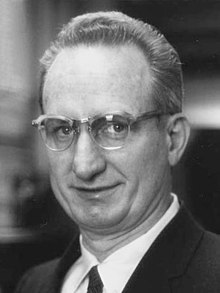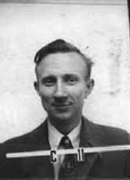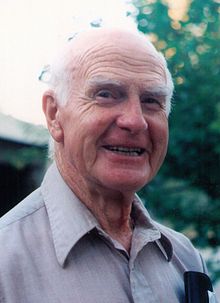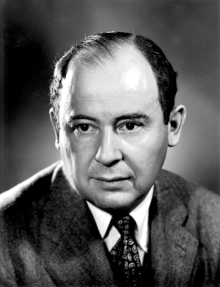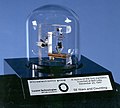Portal:Physics
| Physics Portal Main Page | Physics Textbook | Wikiprojects and things to do |
The Physics Portal
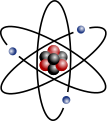

Physics is the natural science of matter, involving the study of matter, its fundamental constituents, its motion and behavior through space and time, and the related entities of energy and force. Physics is one of the most fundamental scientific disciplines, with its main goal being to understand how the universe behaves. A scientist who specializes in the field of physics is called a physicist.
Physics is one of the oldest academic disciplines and, through its inclusion of astronomy, perhaps the oldest. Over much of the past two millennia, physics, chemistry, biology, and certain branches of mathematics were a part of natural philosophy, but during the Scientific Revolution in the 17th century these natural sciences emerged as unique research endeavors in their own right. Physics intersects with many interdisciplinary areas of research, such as biophysics and quantum chemistry, and the boundaries of physics are not rigidly defined. New ideas in physics often explain the fundamental mechanisms studied by other sciences and suggest new avenues of research in these and other academic disciplines such as mathematics and philosophy.
Advances in physics often enable new technologies. For example, advances in the understanding of electromagnetism, solid-state physics, and nuclear physics led directly to the development of new products that have dramatically transformed modern-day society, such as television, computers, domestic appliances, and nuclear weapons; advances in thermodynamics led to the development of industrialization; and advances in mechanics inspired the development of calculus. (Full article...)
A star is a luminous spheroid of plasma held together by self-gravity. The nearest star to Earth is the Sun. Many other stars are visible to the naked eye at night; their immense distances from Earth make them appear as fixed points of light. The most prominent stars have been categorised into constellations and asterisms, and many of the brightest stars have proper names. Astronomers have assembled star catalogues that identify the known stars and provide standardized stellar designations. The observable universe contains an estimated 1022 to 1024 stars. Only about 4,000 of these stars are visible to the naked eye—all within the Milky Way galaxy.
A star's life begins with the gravitational collapse of a gaseous nebula of material largely comprising hydrogen, helium, and trace heavier elements. Its total mass mainly determines its evolution and eventual fate. A star shines for most of its active life due to the thermonuclear fusion of hydrogen into helium in its core. This process releases energy that traverses the star's interior and radiates into outer space. At the end of a star's lifetime as a fusor, its core becomes a stellar remnant: a white dwarf, a neutron star, or—if it is sufficiently massive—a black hole. (Full article...)Did you know -
- ... that nuclear fusion reactions are probably occurring at or above the sun's photosphere; it is a process called solar surface fusion.
- ... that the submarine telescope ANTARES, intended to detect neutrinos, may also be used to observe bioluminescent plankton and fish?
- ... that a touch flash releases about a billion photons a second far less than produced in a particle accelerator?
Selected image -
The Hubble Deep Field (HDF) is an image of a small region in the constellation Ursa Major, constructed from a series of observations by the Hubble Space Telescope. It covers an area 2.5 arcminutes across, two parts in a million of the whole sky
-
The Hubble Deep Field
-
Details from the Hubble Deep Field illustrate the wide variety of galaxy shapes, sizes and colours found in the distant universe.
Related portals
June anniversaries

- 1 June 1831 – James Clark Ross discovers the North Magnetic Pole.
- 1 June 1869 – Thomas Edison receives a patent for his electric voting machine.
- 1 June 1910 – Robert Falcon Scott expedition leaves England for South Pole.
- 1 June 1978 – First Patent Cooperation Treaty international filings.
- 1 June 1980 – Cable News Network (CNN) begins broadcasting.
- 1 June 1990 – Bush and Gorbachev sign chemical weapons ban.
- 1 June 2000 – Patent Law Treaty is signed.
- 2 June 1966 – Surveyor 1 lands on the Moon.
- 2 June 2003 - ESA launches Mars Express probe to Mars.
- 3 June 1965 - First American spacewalk, mission Gemini IV
- 3 June 1973 – A Soviet supersonic Tupolev Tu-144 crashes.
- 4 June 781 BC – First historic solar eclipse is recorded in China.
- 4 June 1973 – A patent for the ATM is granted.
- 4 June 1996 - First flight. Ariane 5 rocket explodes after roughly 20 seconds.
- 5 June 1977 – Apple II, personal computer goes on sale.
Birthdays
- 1 June 1633 – Geminiano Montanari, Italian astronomer (d. 1687)
- 1 June 1796 – Nicolas Léonard Sadi Carnot, French physicist (d. 1832)
- 1 June 1899 – Edward Charles Titchmarsh, English mathematician (d. 1963)
- 1 June 1907 – Frank Whittle, invented jet engine. (d. 1996)
- 1 June 1917 – William S. Knowles Nobel Prize laureate
- 1 June 1940 – Kip Thorne, American physicist
- 2 June 1930 – Pete Conrad, American astronaut (d. 1999)
- 2 June 1949 – Heather Couper, British astronomer
- 3 June 1659 – David Gregory, Scottish astronomer (d. 1708)
- 3 June 1923 – Igor Shafarevich, Russian mathematician
- 4 June 1704 – Benjamin Huntsman, English inventor and manufacturer (d. 1776)
- 4 June 1877 – Heinrich Wieland, German biochemist & Nobel laureate (d. 1957)
- 4 June 1916 – Robert F. Furchgott, American chemist & Nobel laureate (d. 2009)
- 4 June 1967 – Robert Shane Kimbrough, American astronaut
- 5 June 1760 – Johan Gadolin, Finnish scientist (d. 1852)
- 5 June 1819 – John Couch Adams, English astronomer (d. 1892)
- 5 June 1862 – Allvar Gullstrand, Swedish ophthalmologist Nobel laureate (d. 1930)
- 5 June 1900 – Dennis Gabor, Hungarian physicist, Nobel laureate (d. 1979)
- 5 June 1965 – Michael E. Brown, American astronomer
- 13 June 1831 - James Clerk Maxwell, Scottish physicist (d. 1879)
General images
Categories

Fundamentals: Concepts in physics | Constants | Physical quantities | Units of measure | Mass | Length | Time | Space | Energy | Matter | Force | Gravity | Electricity | Magnetism | Waves
Basic physics: Mechanics | Electromagnetism | Statistical mechanics | Thermodynamics | Quantum mechanics | Theory of relativity | Optics | Acoustics
Specific fields: Acoustics | Astrophysics | Atomic physics | Molecular physics | Optical physics | Computational physics | Condensed matter physics | Nuclear physics | Particle physics | Plasma physics
Tools: Detectors | Interferometry | Measurement | Radiometry | Spectroscopy | Transducers
Background: Physicists | History of physics | Philosophy of physics | Physics education | Physics journals | Physics organizations
Other: Physics in fiction | Physics lists | Physics software | Physics stubs
Physics topics
Classical physics traditionally includes the fields of mechanics, optics, electricity, magnetism, acoustics and thermodynamics. The term Modern physics is normally used for fields which rely heavily on quantum theory, including quantum mechanics, atomic physics, nuclear physics, particle physics and condensed matter physics. General and special relativity are usually considered to be part of modern physics as well.
More recognized content
Associated Wikimedia
The following Wikimedia Foundation sister projects provide more on this subject:
-
Commons
Free media repository -
Wikibooks
Free textbooks and manuals -
Wikidata
Free knowledge base -
Wikinews
Free-content news -
Wikiquote
Collection of quotations -
Wikisource
Free-content library -
Wikiversity
Free learning tools -
Wikivoyage
Free travel guide -
Wiktionary
Dictionary and thesaurus
Sources
Portals on Wikipedia
- Pages using the Phonos extension
- Pages with German IPA
- Pages including recorded pronunciations
- Pages with Italian IPA
- Pages with Hungarian IPA
- Manually maintained portal pages from June 2018
- All manually maintained portal pages
- Portals with triaged subpages from June 2018
- All portals with triaged subpages
- All portals
- Portals with named maintainer
- Random portal component with 11–15 available subpages
- Random portal component with 26–30 available image subpages
- Automated article-slideshow portals with 101–200 articles in article list
- Physics
- Physical science portals



![Image 1 Einstein in 1921 Albert Einstein (/ˈaɪnstaɪn/ EYEN-styne; German: [ˈalbɛɐt ˈʔaɪnʃtaɪn] ⓘ; 14 March 1879 – 18 April 1955) was a German-born theoretical physicist who is widely held to be one of the greatest and most influential scientists of all time. Best known for developing the theory of relativity, Einstein also made important contributions to quantum mechanics, and was thus a central figure in the revolutionary reshaping of the scientific understanding of nature that modern physics accomplished in the first decades of the twentieth century. His mass–energy equivalence formula E = mc2, which arises from relativity theory, has been called "the world's most famous equation". He received the 1921 Nobel Prize in Physics "for his services to theoretical physics, and especially for his discovery of the law of the photoelectric effect", a pivotal step in the development of quantum theory. His work is also known for its influence on the philosophy of science. Born in the German Empire, Einstein moved to Switzerland in 1895, forsaking his German citizenship (as a subject of the Kingdom of Württemberg) the following year. In 1897, at the age of seventeen, he enrolled in the mathematics and physics teaching diploma program at the Swiss federal polytechnic school in Zürich, graduating in 1900. In 1901, he acquired Swiss citizenship, which he kept for the rest of his life. In 1903, he secured a permanent position at the Swiss Patent Office in Bern. In 1905, he submitted a successful PhD dissertation to the University of Zurich. In 1914, he moved to Berlin in order to join the Prussian Academy of Sciences and the Humboldt University of Berlin. In 1917, he became director of the Kaiser Wilhelm Institute for Physics; he also became a German citizen again, this time as a subject of the Kingdom of Prussia. (Full article...)](http://upload.wikimedia.org/wikipedia/en/d/d2/Blank.png)

